Global and Chinese Automakers’ Modular Platforms and Technology Planning Research Report, 2022
Research on Automakers’ Platforms and Their Planning: the Strategic Layout Directions of 32 Automakers
At present, global automotive industry is in the midst of profound changes unseen in a century. This can be intensively demonstrated through energy, power system, E/E architecture, intelligence and connectivity, application scenarios, user experience, and more. In this context, major automakers are changing their strategic layout. They work hard on key areas from automotive manufacturing platforms, E/E architecture and software platforms to autonomous driving, intelligent cockpit and electrification, and attract consumers and satisfy their needs with differentiated products.

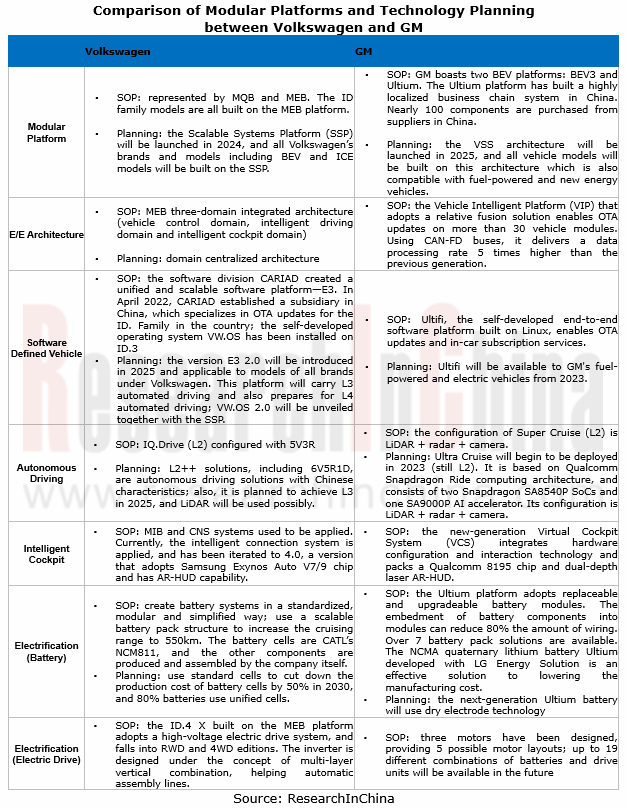
1. Automakers keep upgrading their modular platform architectures.
Modular platforms remain superior in increasing the universality of components and lowering R&D and production costs. At present, most automakers have their own modular platforms, or even multiple platforms. Modular architecture outperforms a modular platform. It is an extension and expansion of the platform concept. With higher universality of components and higher scalability, modular architecture is compatible with vehicles of differing classes and power types. Automakers therefore have started gradual transition from modular platform to modular architecture.
Modular architecture favors higher productivity, lower procurement/manufacturing costs, and shorter R&D cycles. In current stage, the generalization rate of components in GAC Global Platform Modular Architecture (GPMA) surpass 60%, compared with 70% in Geely Sustainable Experience Architecture (SEA) and 70%-80% in Toyota New Global Architecture (TNGA).
At present, automakers in China deploy modular architectures relatively early. Among them, BYD, Geely, Chery, and Changan Automobile have launched their own modular architectures. The modular architecture launches of foreign peers are concentrated in the period from 2024 to 2025.
Taking Volkswagen as an example, the company plans to eventually integrate its platforms into SSP, a scalable mechatronics platform architecture applicable to all Volkswagen’s brands and models. In the future, all brands and models at all levels under Volkswagen will be built on this super platform.
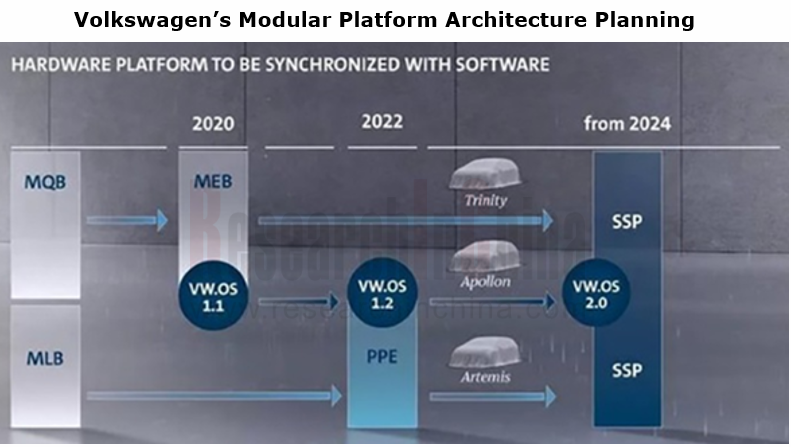
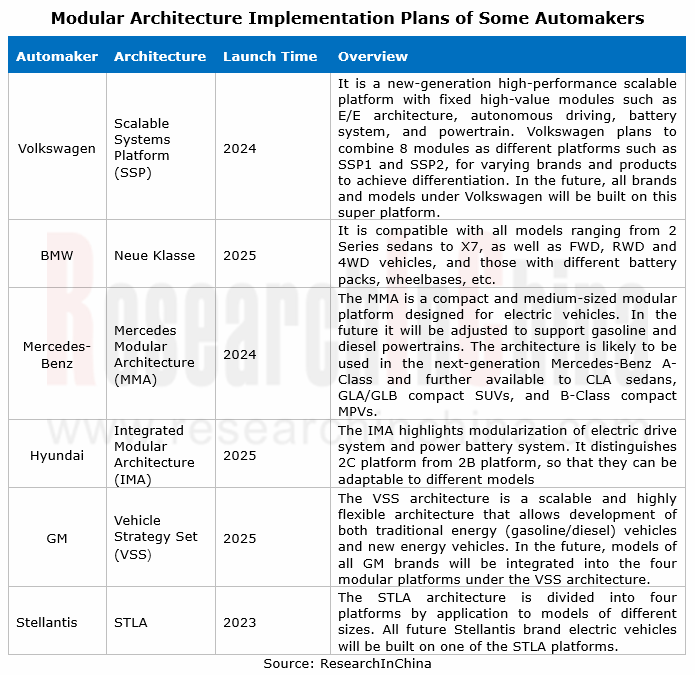
2. EEA tends to be centralized.
Through the lens of E/E architecture planning, most automakers plan to deploy centralized vehicle E/E architectures:
GAC projects installation of the centralized E/E architecture "Protoss" in 2023 Aion high-end models;
Hongqi plans launch of its quasi-central architecture FEEA3.0 in 2023;
Great Wall Motor plans to introduce its central computing architecture GEEP 5.0 in 2024;
Changan Automobile is expected to complete the development of its domain centralized architecture in 2025.
For example, GAC has upgraded its E/E architecture in all aspects and has developed the Protoss E/E Architecture, its new vehicle-cloud integrated E/E architecture that enables centralized computing and is about to come out in 2023 at the earliest. This architecture consists of three core computer groups, i.e., central computer, intelligent driving computer and infotainment computer, and four zonal controllers. The intelligent driving domain carries Huawei Ascend 610, a 400TOPS high-performance chip.
3. Automakers transform from independent software platform developers to software service providers.
As autonomous driving and intelligent connectivity boom, large automakers have set off a new round of “software-defined vehicle”-centric transformation and upgrading. Some transform themselves to software service providers by way of establishing software divisions/subsidiaries, independently developing operating systems (OS), and building software platforms.
Compared with the turnkey model in which Tier-1 suppliers take full charge in conventional vehicle supply chain, auto brands now take more active part. Joint R&D and flat cooperation gradually blur the boundaries of the supply chain ecosystem, and also diversifies the needs for business models. Modular services thus need providing to meet the individual needs of auto brands with differentiated configurations for different vehicle models. For example, Bosch adopts hardware modularization + middleware layer generalization + software individualization model and adjusts parameters to quickly address the needs of different functions.
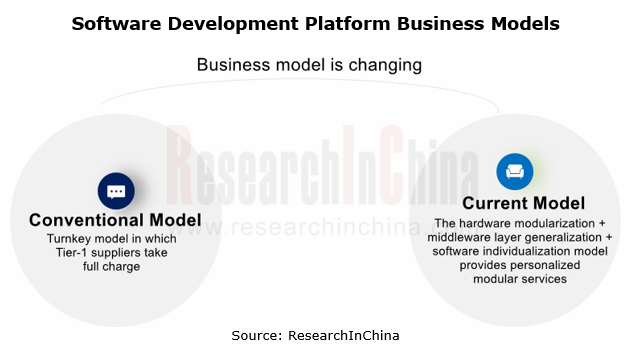
Volkswagen is a typical automaker that develops software on its own. In 2019, Volkswagen established a software division and planned to boost the in-house share of car software development from less than 10% to at least 60% in the five years to come. In 2021, Volkswagen changed the software division into CARIAD, a joint-stock company which will be responsible for independently developing the automotive operating system VW.OS and creating the software platform E3. In April 2022, CARIAD announced its China strategy. Its Chinese subsidiary was then established.
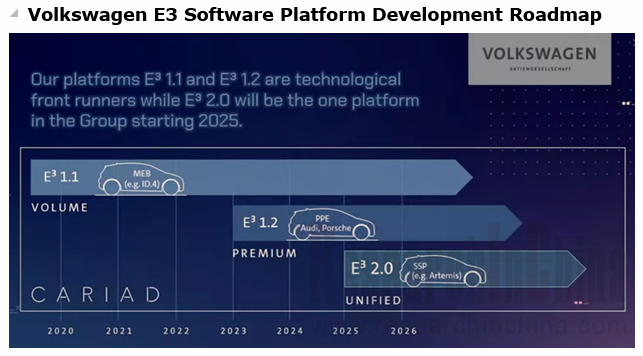
In addition to Volkswagen, GM, Toyota, Mercedes-Benz, Hyundai, SAIC and the like have also begun to self-develop operating systems and deploy their own software platforms, aiming to transform from an automaker to a software service provider. Toyota, which recently acquired the automotive operating system provider Renovo Motors, plans to roll out its own operating system, Arene, in 2025.
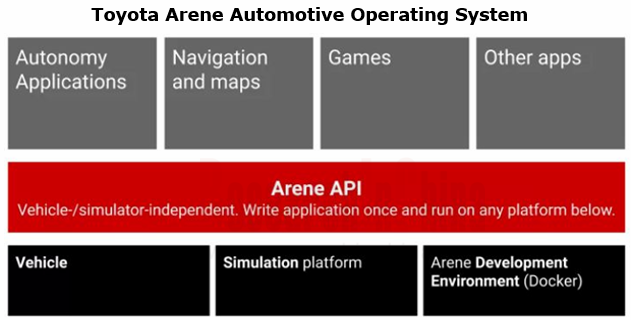
4. L3 automated driving of OEMs comes into service.
The mainstream automakers deploy autonomous driving in the following ways:
? Investing in acquiring autonomous driving startups
? Partnering with big tech firms
? Cooperating with other OEMs
? Self-developing, or combining the above ways
On this basis, these automakers have also introduced their own autonomous driving assistance systems, including Volkswagen IQ.Drive, Toyota Advanced Drive, Mercedes-Benz Drive Pilot, Geely G-Pilot, and GAC ADiGO. Among them, Mercedes-Benz is the world’s first automotive company to meet the United Nations regulation UN-R157. Mercedes-Benz marketed its L3 automated driving system Drive Pilot in Germany in May 2022, and announced that it will be responsible for accidents caused by the system when activated.
Sensor configuration of Mercedes-Benz Drive Pilot:
? 1 LiDAR
? 1 long-range radar
? 4 short-range radars
? 1 stereo camera
? 1 rear view camera
? 1 in-vehicle driver monitoring camera
? 1 differential GPS
Sensor configuration of automated parking:
? 4 surround view cameras
? 12 ultrasonic sensors
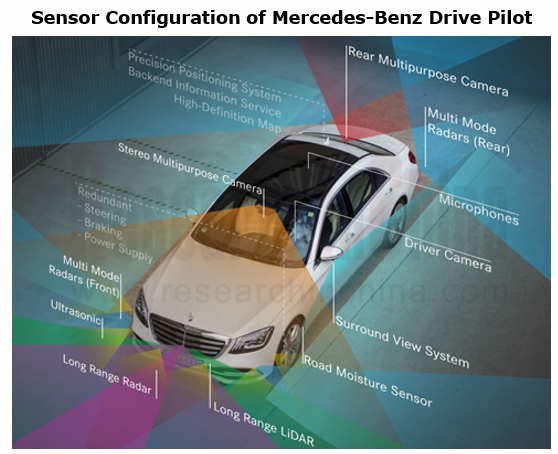
5. Intelligent cockpit interconnection platforms connect vehicles, people and everything, playing a more important role.
As the Internet thrives, major automakers show much enthusiasm for intelligent cockpits. Almost all of them have rolled out different intelligent cockpit interconnection platforms as selling points, in a bid to attract consumers. Examples include BMW iDrive and Mercedes-Benz MBUX, BYD DiLink and Geely GKUI.
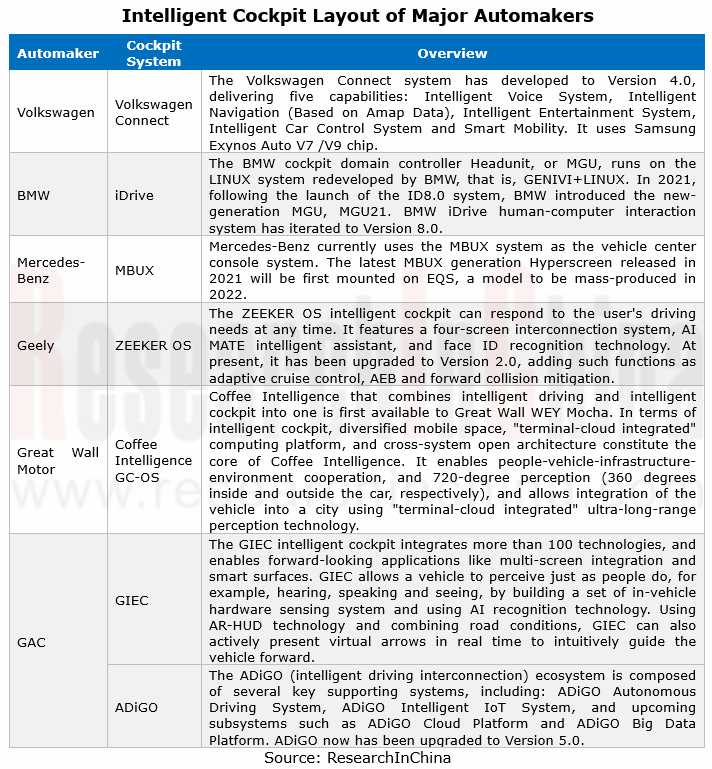
Intelligent Steering Key Components Report, 2023
Research on intelligent steering key components: four development trends of intelligent steering
The automotive chassis consists of four major systems: transmission system, steering system, driving ...
Automotive Digital Instrument Cluster Operating System Report, 2023
Digital Instrument Cluster Operating System Report: QNX commanded 71% of the Chinese intelligent vehicle cluster operating system market.
Amid the trend for the integration of digital cluster and cen...
800V High Voltage Platform Research Report, 2023
How to realize the commercialization of 800V will play a crucial part in the strategy of OEMs.
As new energy vehicles and battery technology boom, charging and battery swapping in the new energy vehi...
Automotive Intelligent Cockpit Platform Research Report, 2023
Intelligent cockpit platform research: the boundaries between vehicles and PCs are blurring, and there are several feasible paths for cockpit platforms.
Automotive Intelligent Cockpit Platform Resea...
Global and China Automotive Wireless Communication Module Industry Report,2023
Vehicle communication module research: 5G R16+C-V2X module, smart SiP module and other new products spring up.
In 2022, 4G modules swept 84.3% of the vehicle communication module market....
Intelligent Vehicle Cockpit-Driving Integration Research Report, 2023
Cockpit-Driving Integration Research: many companies are making layout and may implement it during 2024-2025.
1. What is the real cockpit-driving integration?
At present, automotive electroni...
Chinese Joint Venture OEMs' Telematics System and Entertainment Ecosystem Research Report, 2022
Telematics System Research 2: Baidu Family Bucket, Huawei and Tencent Become the Mainstream Ecosystems
ResearchInChina released Chinese Joint Venture OEMs' Telematics System and Entertainment Ecosyst...
China Automotive Digital Key Research Report, 2023
Automotive Digital Key Research: the pace of mobile phones replacing physical keys quickens amid the booming market
"China Automotive Digital Key Research Report, 2023" released by ResearchInChina co...
Automotive Camera Tier2 Suppliers Research Report, 2022-2023
1. The automotive camera market maintains a pattern of "one superpower and several great powers".
Automotive cameras are used to focus the light reflected from the target onto the CIS after refractio...
Emerging Carmaker Strategy Research Report, 2023 - NIO
Emerging carmaker strategy research: NIO is deploying battery swap and sub-brands for the knockout match in 2023.In 2022, the sales surged by 32.3% year on year, being concentrated in first-tier citie...
Nissan CASE (Connectivity, Automation, Sharing and Electrification) Layout Research Report, 2022-2023
Nissan CASE research: two leverages for Dongfeng Nissan to turn the tables. Introduction: since 2020, the declining sales of Dongfeng Nissan have exposed its problems in brand influence and product co...
China Automotive Gesture Interaction Development Research Report,2022-2023
Vehicle gesture interaction research: in 2022, the installations rocketed by 315.6% year on year.China Automotive Gesture Interaction Development Research Report, 2022-2023 released by ResearchInChina...
Automotive Power Management Integrated Circuits (PMIC) Industry Report, 2023
Automotive PMIC research: the process of domestic automotive PMICs replacing foreign ones in China in the “crisis of chip shortage”.
Automotive power management integrated circuits (PMIC) find broad ...
Automotive Cockpit SoC Research Report, 2023
Cockpit SoC research in 2023: Can X86 solutions returning to cockpit SoC challenge the “ARM+Google” mobile solution?
This report highlights the research on the products and plans of 9 overseas and 8 ...
AI Foundation Model and Autonomous Driving Intelligent Computing Center Research Report, 2023
New infrastructures for autonomous driving: AI foundation models and intelligent computing centers are emerging.
In recent years, the boom of artificial intelligence has actuated autonomous driving, ...
Automotive Microcontroller Unit (MCU) Industry Report, 2023
MCU Industry Research: Automotive high-end MCU will be still in short supply, and how OEMs can break the situation.
ResearchInChina has released "Automotive Microcontroller Unit (MCU) Industry Repor...
Global and China Fuel Cell Market and Trend Research Report, 2023
Fuel Cell Industry Research: Hydrogen energy has been put on the national agenda with scenario application being rolled out.The hydrogen energy industry has been included into the national energy stra...
Global and China Automotive Smart Antenna Research Report, 2022-2023
Smart antenna research: the integration of automotive antennas and intelligent connected terminals tends to accelerate.
The development trend of automotive antennas: tend to be intelligent, diversif...